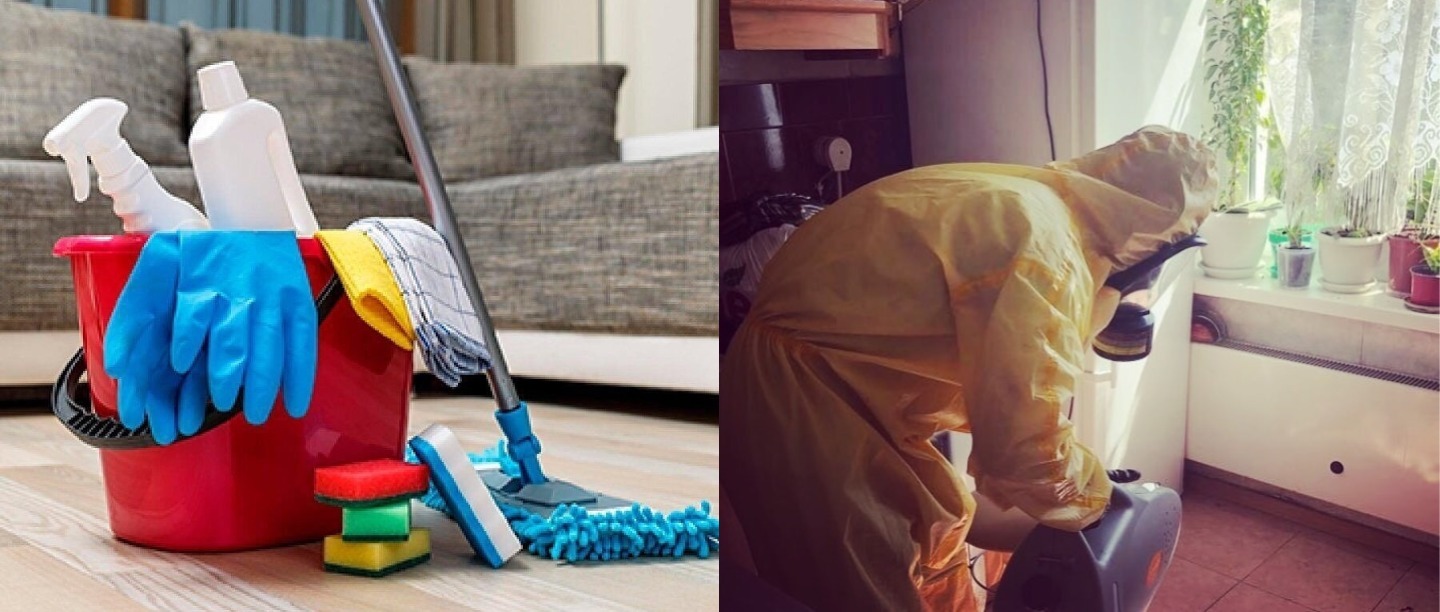Spending most of your days frantically cleaning your hands of late? Well, that’s exactly how it should be. Cleaning and disinfecting seem to be our only shield against the COVID-19 scares and that’s why we need to hold on it with our dear lives. However, as we go about keeping our hands all sanitised, does it also hold true for the rest of our home? Think about it: what point is even cleaning your hands if your home’s high touch surfaces are all laced with bacteria, ready to take you down at the first touch?
As per a report by Live Science, the fact about coronavirus is that it can actually remain viable in air for to three hours, on copper for up to four hours, on cardboard up to 24 hours and on plastic and stainless steel up to 72 hours. Now, this should be enough to set the alarms ringing and convince you to pick up your cleaning essentials and get the work started. But before you dive into a house cleaning spree, here’s everything that you need to know about cleaning your home in the time of coronavirus.
First Things First: How Often Should You Be Cleaning Your Home?

Desperate times need desperate measures and the need right now is to clean your entire house and not just once in a week. As a ground rule, anything that you touch in your house needs to be cleaned. Additionally, the frequency at which we touch the surface that’s being cleaned becomes a major determinant here. That’s where the entire discourse of “high-touch surfaces” comes in. Whatever is identified as a “high-touch surface” in your home needs to be sanitised every day.
Here’s a list of some high touch surfaces that you should be paying attention to; doorknobs, table surfaces, kitchen counters and containers, dining tables and chairs, toilet seat and handles, faucets and faucet knobs, remotes, electronics and switchboards.
Additionally, pay attention to what you are touching and disinfect the surface ASAP. Don’t forget to sanitise your cupboards, bed-posts, less used kitchen utensils as well.
How To Go About It: Clean, Then Sanitise
While most of us might have an inkling to slather everything with a generous amount of disinfectant/sanitiser, we are missing out on a very important step here i.e. cleaning. For starters, we need to understand the difference between cleaning and disinfecting. While cleaning is about getting rid of surface contamination, disinfecting helps us by killing pathogens. CDC advises you to do both irrespective of whether you have a sick person at home or not.
What Kind Of Disinfectants You Should Be Using
EPA has released a list of disinfectants that are potent enough to kill coronavirus from the surfaces. Additionally, the ingredient label on the disinfectant packaging should help you understand what’s best suited right now. “If [a disinfectant product] has an indication for killing influenza, RSB, SARS virus, or other coronaviruses then it should work against this one also,” Dr. John Townes, head of infection prevention and control at the Oregon Health & Science University (OHSU), shared in a recent interaction with Wired.
What To Do In Case You Cannot Find A Disinfectant In The Market

For all those, who are finding it difficult to find a suitable disinfectant in the market owing to a shortage, CDC also shared a recipe for a DIY cleaning solution.
Here’s how you can make a DIY bleach disinfectant spray:
To make a DIY household disinfectant spray all you need is four teaspoons household bleach and 1-quarter water. Pour both the ingredients in a spray bottle, shake properly, and the disinfectant would be ready. For proper usage, pour spray on the surface, leave for ten minutes, and then wipe away with a sponge or wet cloth.
Clean All Your Cleaning Equipment
Once you have cleaned your home, ensure to clean the sponges, mops and other thigs that have been used for the cleaning. To clean them, all you need to do it either pop them in the washing machine or scrub them properly with hot water. Also, don’t forget to run your washing machine with nothing inside. Do it with warm soapy water. You can also add some disinfectants. This will stop germs from spreading and will keep your machine all clean. Also, don’t leave any wet laundry in the washing machine.
Lastly, don’t forget to thoroughly wash your hands and sanitise them once you are done with the cleaning spree. #StayHomeStaySafe!
Featured Image: Instagram
Start your 2020 right with our cool new planners and statement-making sweatshirts that are fun, fab and 100% you! Psst… there’s an additional 20% off too, so head to POPxo.com/shop and take it up a POP!



